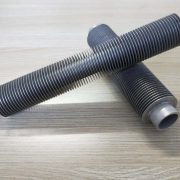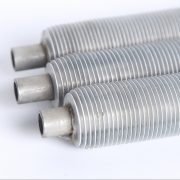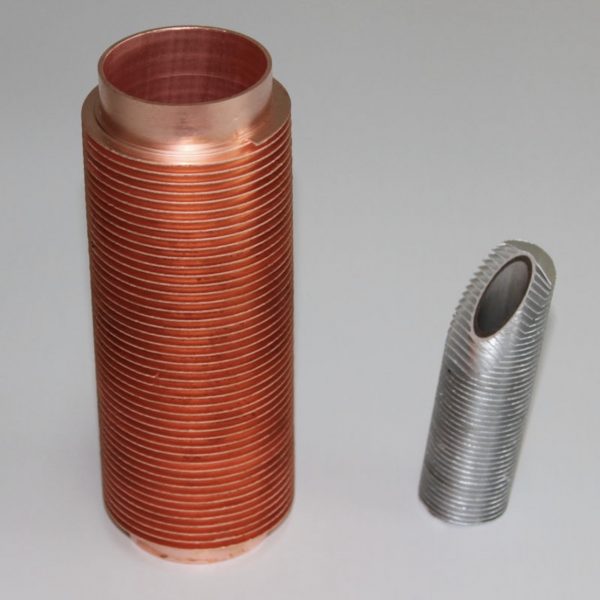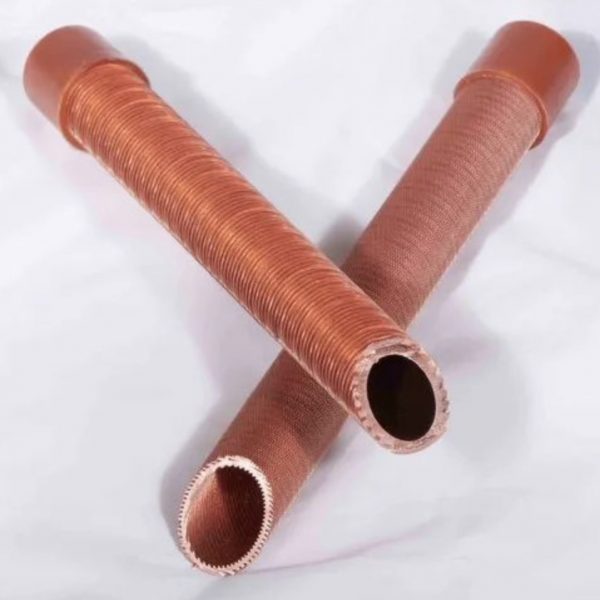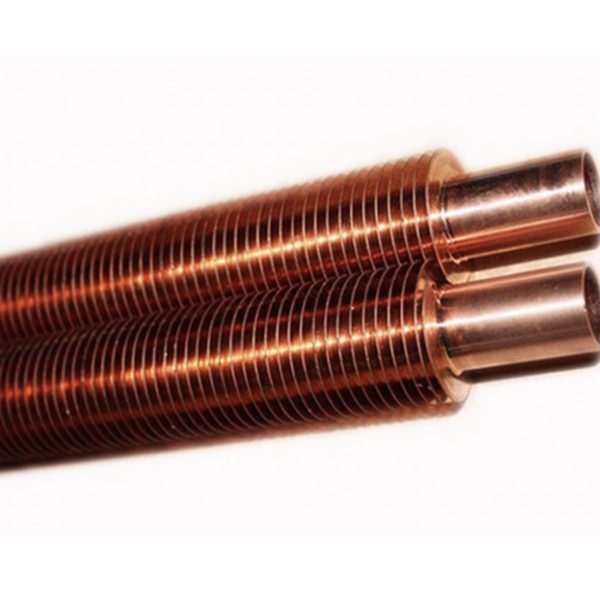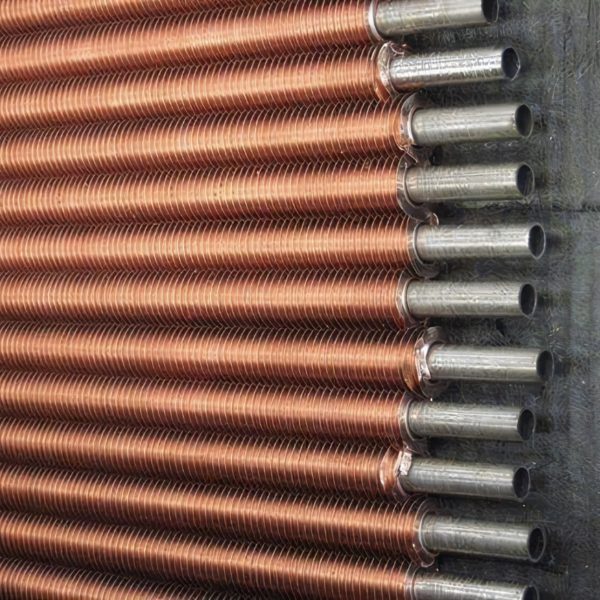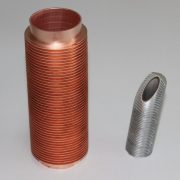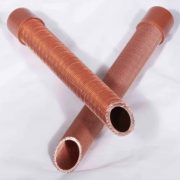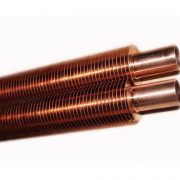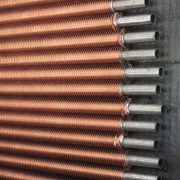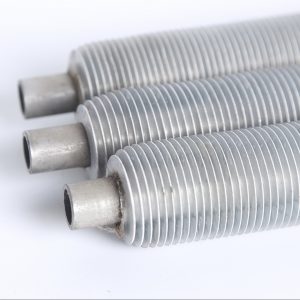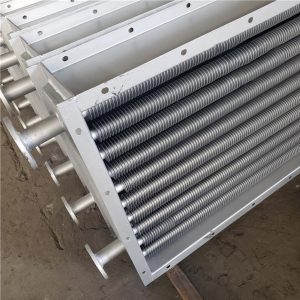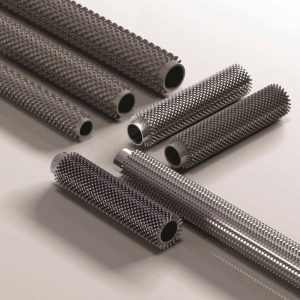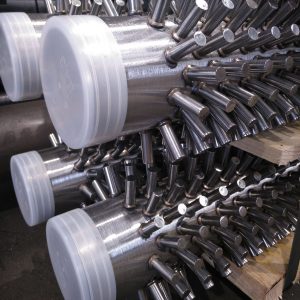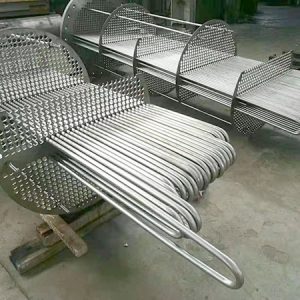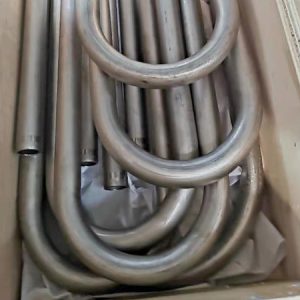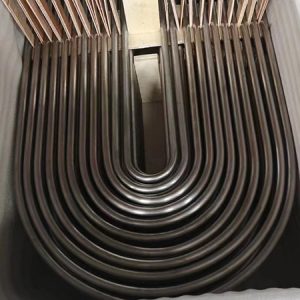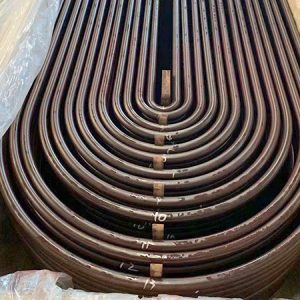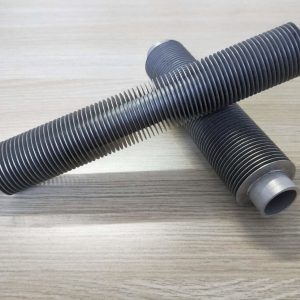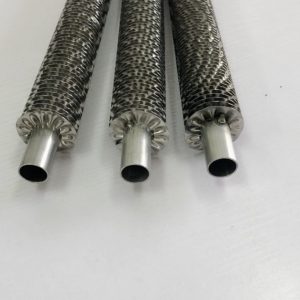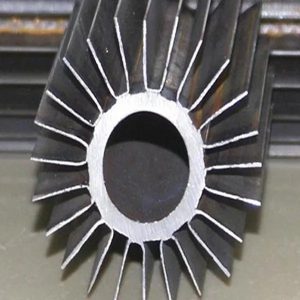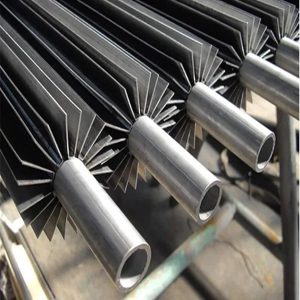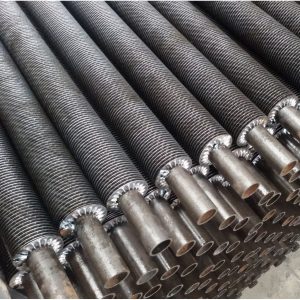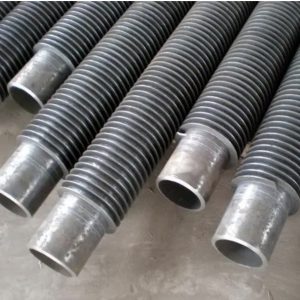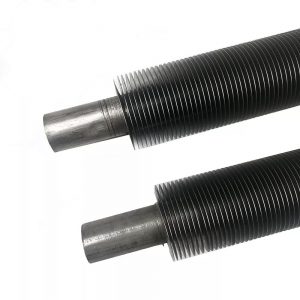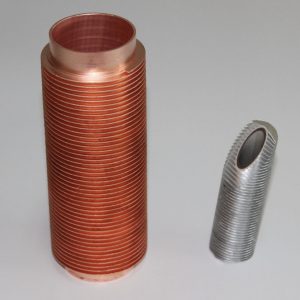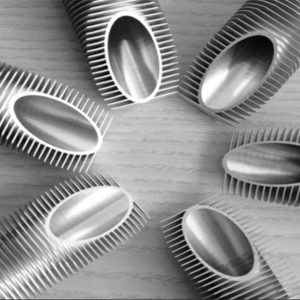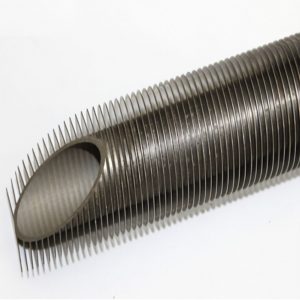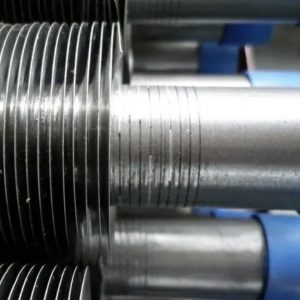구리 핀 튜브
구리는 금속 원소입니다., 순수한 구리는 부드러운 금속입니다.. 표면은 붉은 오렌지색이며 방금 잘라 냈을 때 금속 광택이 있습니다., 그리고 그 단순한 물질은 보라색-빨간색입니다.. 좋은 연성, 높은 열전도율 및 전기 전도성, 따라서 케이블 및 전기 및 전자 부품에서 가장 일반적으로 사용되는 재료입니다..
건축 자재로도 사용할 수 있으며 많은 합금으로 구성 될 수 있습니다.. 구리 합금은 우수한 기계적 특성과 낮은 전기 저항을 가지고 있습니다.. 가장 중요한 것은 청동과 황동입니다.. 또한, 구리는 또한 기계적 특성을 손상시키지 않고 여러 번 재활용할 수 있는 내구성 있는 금속입니다..
구리 파이프 (빨간색 구리 파이프라고도 함) 일반적으로 수돗물 파이프에 사용됩니다., 난방 및 냉각 파이프, 다양한 환경에서 사용할 수 있습니다.. 구리 파이프는 냉수 및 온수 시스템에서 금속 및 비금속 파이프의 장점을 결합합니다.. 구리 파이프는 고온에 강하며 다양한 환경에서 사용할 수 있습니다.. 이것과 비교, 다른 많은 파이프 재료의 단점은 분명합니다..
- 묘사
- The advantages of finned tubes
- 문의
구리는 금속 원소입니다., 순수한 구리는 부드러운 금속입니다.. 표면은 붉은 오렌지색이며 방금 잘라 냈을 때 금속 광택이 있습니다., 그리고 그 단순한 물질은 보라색-빨간색입니다.. 좋은 연성, 높은 열전도율 및 전기 전도성, 따라서 케이블 및 전기 및 전자 부품에서 가장 일반적으로 사용되는 재료입니다..
건축 자재로도 사용할 수 있으며 많은 합금으로 구성 될 수 있습니다.. 구리 합금은 우수한 기계적 특성과 낮은 전기 저항을 가지고 있습니다.. 가장 중요한 것은 청동과 황동입니다.. 또한, 구리는 또한 기계적 특성을 손상시키지 않고 여러 번 재활용할 수 있는 내구성 있는 금속입니다..
구리 파이프 (빨간색 구리 파이프라고도 함) 일반적으로 수돗물 파이프에 사용됩니다., 난방 및 냉각 파이프, 다양한 환경에서 사용할 수 있습니다.. 구리 파이프는 냉수 및 온수 시스템에서 금속 및 비금속 파이프의 장점을 결합합니다.. 구리 파이프는 고온에 강하며 다양한 환경에서 사용할 수 있습니다.. 이것과 비교, 다른 많은 파이프 재료의 단점은 분명합니다..
예를 들어, the galvanized steel pipes used in residential buildings in the past are very easy to rust. If they are not used for a long time, the tap water will turn yellow and the water flow will become small. 또한, the strength of some materials will decrease rapidly at high temperatures, which may cause unsafe risks when used in hot water pipes. The melting point of copper is as high as 1083 degrees Celsius, and the temperature of the hot water system is negligible for copper pipes.
China Copper Pipe is the best one and is the best connecting pipe. The copper pipe is fire-resistant and heat-resistant, and can maintain its shape and strength under high temperature without aging.
The pressure resistance of copper pipes is several times or even dozens of times that of plastic pipes and aluminum-plastic pipes. It can withstand the highest water pressure in today’s buildings. In the hot water environment, with the extension of service life, the pressure capacity of plastic pipes significantly decreases, and the mechanical properties of copper pipes remain unchanged in all thermal temperature ranges, so their pressure resistance will not decrease, nor there will be aging.
Copper finned tubes manufacturing process
Pipe line——compressing or rolling——strip peeling——washing——pressure test——blast blowing——packaging. The cold machining process of fins provides excellent mechanical resistance , fins are strong and have strong resistance to atmospheric corrosion, 등. The pressure required to extrude the fin from the aluminum sleeve creates an excellent “pressure bond” between the two materials. 또한, the aluminum finned material completely surrounds the metal of the tube, so there is no risk of electrical corrosion at the fin root (between the tube and the fin). All of these advantages ensure the most stable performance over time of all other fin types.
Copper finned tube applications
Copper finned tubes products are widely used in petrochemical, power plant and power plant renovation, air conditioning and refrigeration, boilers, finned tube economizers and air preheaters.
The advantages of finned tubes
Transferring heat from a hot fluid into a colder fluid through a tube wall is the reason many of us use finned tubes. But you may ask, what is the major advantage of using a finned tube? Why can’t you just use a regular tube to make this transfer? Well you can but the rate will be much slower.
By not using a finned tube the outside surface area is not significantly greater than the inside surface area. Because of that, 열 전달 계수가 가장 낮은 유체가 전체 열 전달 속도를 결정합니다. When the heat transfer coefficient of the fluid inside the tube is several times larger than that of the fluid outside the tube the overall heat transfer rate can be greatly improved by increasing the outside surface area of the tube.
Finned tubes increase outside the surface area. By having a finned tube in place, it increases the overall heat transfer rate. This then decreases the total number of tubes required for a given application which then also reduces overall equipment size and can in the long-run decrease the cost of the project. In many application cases, 1개의 지느러미가 있는 관은 6개 이상 더 적은에 벌거벗은 관을 대체합니다 1/3 비용과 1/4 the volume.
For applications that involve the transfer of heat from a hot fluid to a colder fluid through a tube wall, fin tubes are used. Usually, for an air heat exchanger, where one of the fluids is air or some other gas, the air side heat transfer coefficient will be much lower, so additional heat transfer surface area or a fin tube exchanger is very useful. The overall pattern flow of a finned tube exchanger is often crossflow, 그렇지만, it can also be parallel flow or counterflow.
Fins are used to increase the effective surface area of heat exchanger tubing. Furthermore, finned tubes are used when the heat transfer coefficient on the outside of the tubes is appreciably lower than that on the inside. In other words, heat transferred from liquid to gas, vapor to gas, such as steam to air heat exchanger, and thermic fluid to air heat exchanger.
The rate at which such heat transfer can occur depends on three factors – [1] 두 유체 사이의 온도 차이; [2] 각 유체와 튜브 벽 사이의 열 전달 계수; 그리고 [3] 각 유체가 노출되는 표면적.
Finned tubes are used because they help:
Increase Heat Transfer Rate:
A finned tube exchanger typically has tubes with fins attached to the outside. Usually, there will be some liquid flowing through the inside of the tubes and air or some other gas flowing outside the tubes, where the additional heat transfer surface area due to the finned tube increases the heat transfer rate. In a crossflow fin tube exchanger, the fins will typically be radial fins and they’ll either be circular or square in shape.
Improve Heat Transfer Coefficient:
By not using a finned tube, the outside surface area is not significantly greater than the inside surface area. 이 때문에, 열 전달 계수가 가장 낮은 유체가 전체 열 전달 속도를 결정합니다. When the heat transfer coefficient of the fluid inside the tube is several times larger than that of the fluid outside the tube, the overall heat transfer rate can be greatly improved by increasing the outside surface area of the tube.
Increase Outside Surface Area:
By having a finned tube in place, it increases the overall heat transfer rate. Finned tubes increase the outside surface area. This decreases the total number of tubes required for a given application which then also reduces overall equipment size and can in the long-run decrease the cost of the project.
Finned tube heat exchangers are used in a variety of applications, and more so as industrial heat exchangers. An air heat exchanger like the evaporator coil in an air conditioning unit is typically a fin tube exchanger. Another common fin tube air heat exchanger is the car radiator. The purpose of the car radiator is to cool the hot water in the tubes with the air passing through the crossflow. On the contrary, the air conditioner evaporator coil has the purpose of cooling the air passing through it. The finned tubes that are manufactured at Kainon Boilers, use high grade carbon steel, 스테인리스, 구리, brass, and aluminum. Our finned tube exchangers are designed to meet the specific duty condition, temperature and pressure of the fluids.

